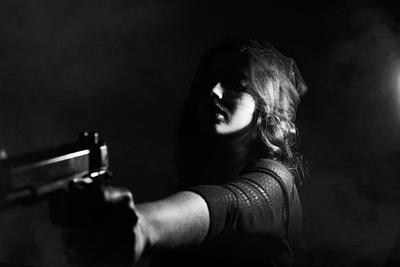Looking for all Articles by Mason Cross?
Five things: plotting a crime novel
Mason Cross provides five top tips for plotting crime fiction.

First person narration makes plotting a lot more difficult
I’m instinctively drawn to writing in the first person, as it’s the purest way for a reader to identify with your protagonist. You can really get inside a character’s head when he or she is the one directly relating the story. However, this approach has its drawbacks, particularly when it comes to plotting. If the story is told from the point of view of a single character, that means that every notable event in the book has to happen while the character is there, or else has to be told to them in exposition from another character. If something exciting is happening somewhere removed from your hero, you can only find out about it after the fact.
That’s why when I began writing The Killing Season, I decided to cheat a little. The chapters focusing on the hero, Carter Blake, are told in the first person. The chapters where I cut away to other characters are related from their point of view, but in the third person. That way, I get to have my cake and eat it: the reader can be a few steps ahead of Blake, but still see the world through his eyes for the most part. It’s much easier to plot and pace the story, because the action doesn’t all have to happen to the lead character.
Make sure there’re regular action beats
I don’t necessarily mean action in the obvious sense; there’s no need to force yourself to insert a car chase or gunfight every thirty pages. Rather, it’s important to have key scenes that advance the plot by introducing a new element or unexpected reversal. That can be the aforementioned car chase, or it could simply be the hero encountering an intriguing new character in a bar.
Lay the groundwork, then go back and make sure it’s solid
Anton Chekhov famously said that if there’s a rifle hanging on the wall in the first act, it has to be fired in the third act. Stephen King perceptively pointed out that the reverse is also true.
Authors are in the happy position of being able to snap their fingers and rewrite reality whenever they choose. So if you get to the end of the book and realise you need a key element in place earlier on, go back and add it in so it looks like you meant it all along. You can see this being done in movies all the time – it’s pretty obvious the power loaders are going to come in handy later on in Aliens, for example. The trick is to weave this in so that the reader doesn’t twig that there’s a Deus in that seemingly uninteresting Machina in the background…
Don’t neglect character beats
Action is fundamentally important in any thriller, but I’d argue that character beats are every bit as vital. Maybe I’m weird, but the parts of a thriller that stay with me are the quiet moments when the hero is alone and in a contemplative mood. One of my favourite scenes in the James Bond novels is a short sequence in Live and Let Die where we discover that Bond is quietly terrified of flying. People say they want an exciting plot, but I think what they really care about is interesting characters.
Keep track of the loose ends
Thriller plots tend to be complex, because there’s usually a central mystery and you have a bunch of characters running around keeping on top of various secrets and skulduggery. That means it’s important to make sure the plot hangs together and that the fine detail makes sense. It means that what most people think is an artistic endeavour can sometimes feel more like a massive construction project. I keep detailed timelines, spreadsheets and cheat sheets everywhere when I’m writing, because otherwise I wouldn’t have a hope in hell of keeping it all together in my head.
Having said that, you should never lose sight of the fact that you’re targeting the reader’s gut, not their brain. The plot should stand up to scrutiny, but the technical work should never overwhelm the desire to tell a good story.